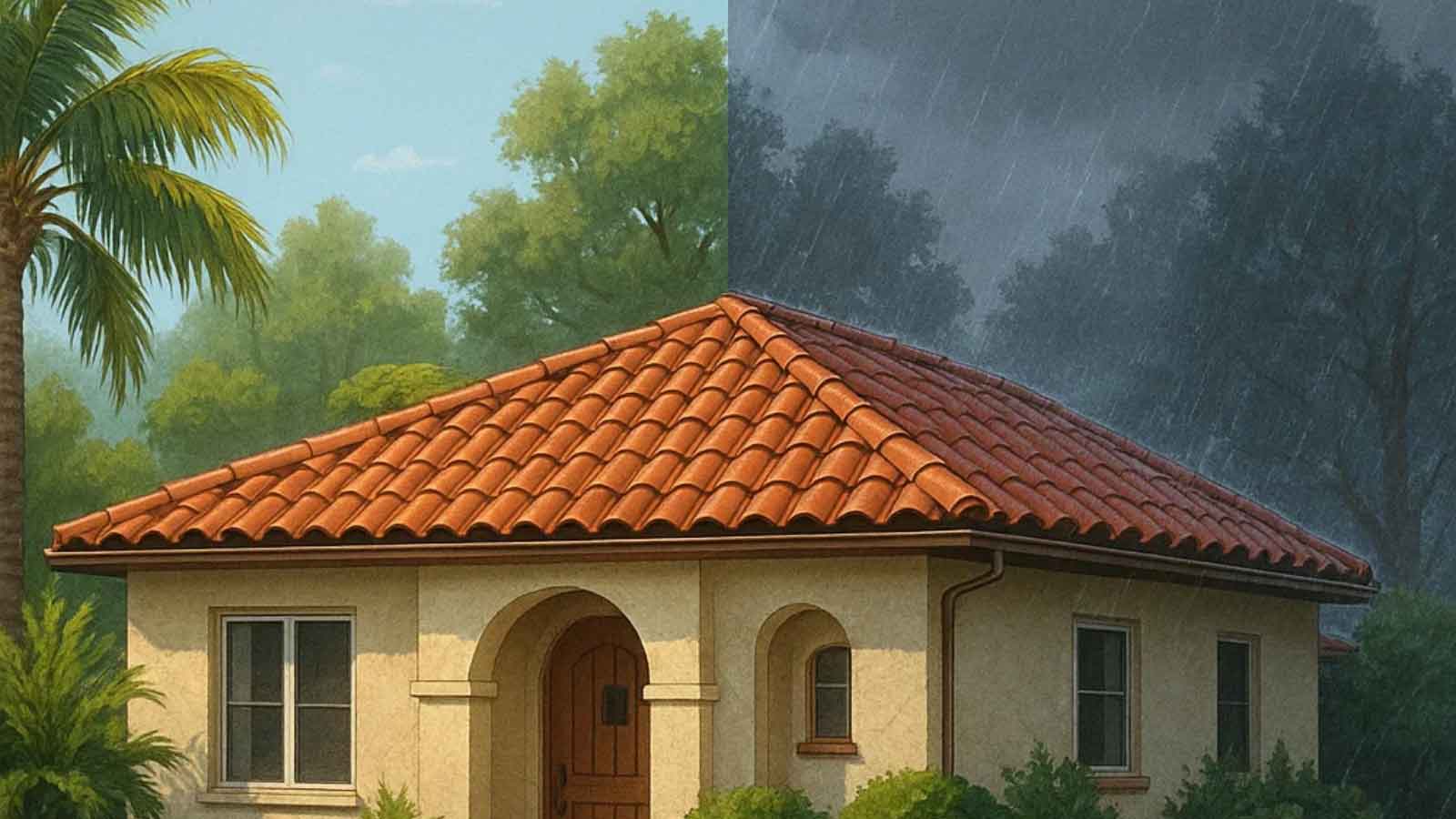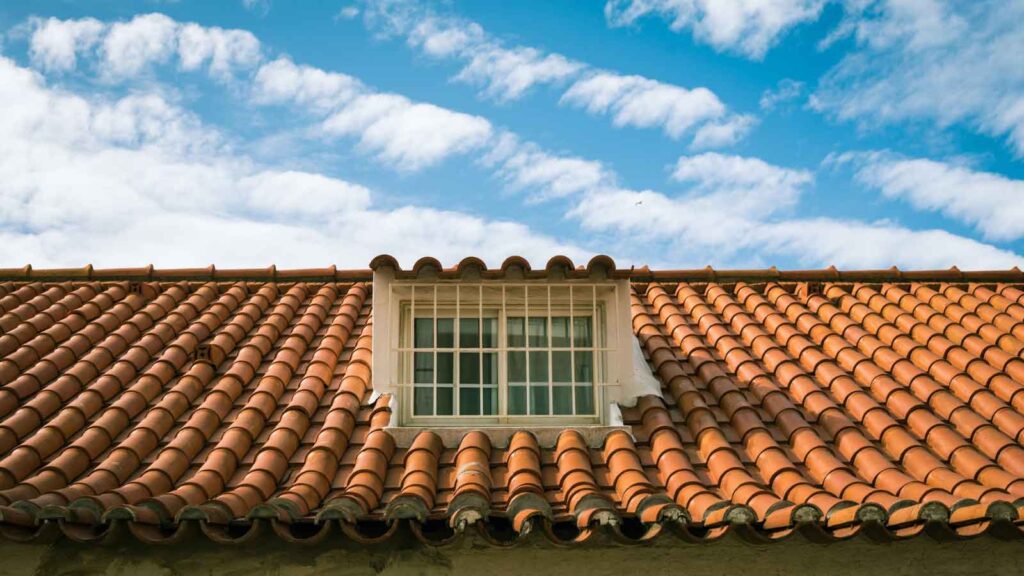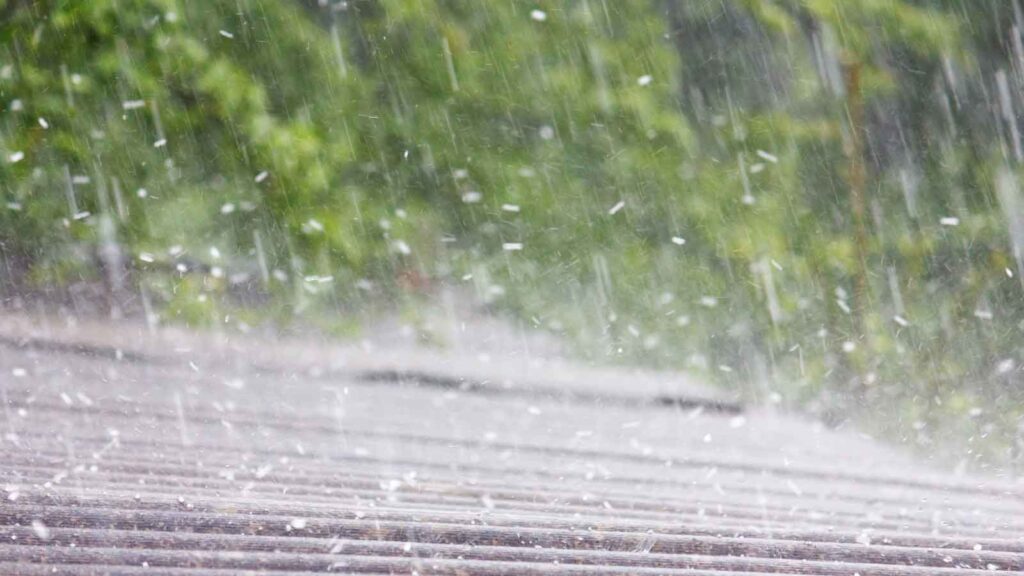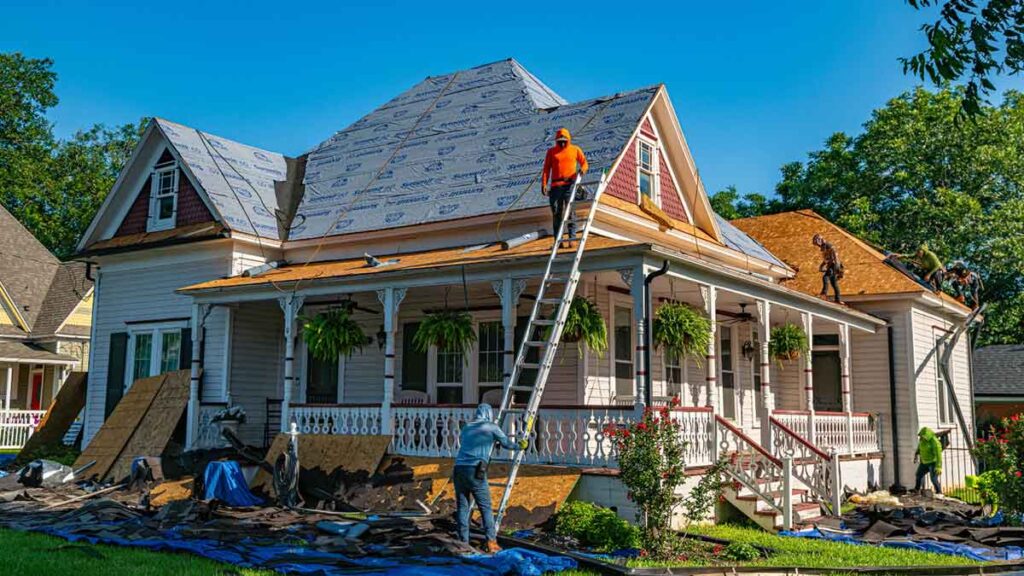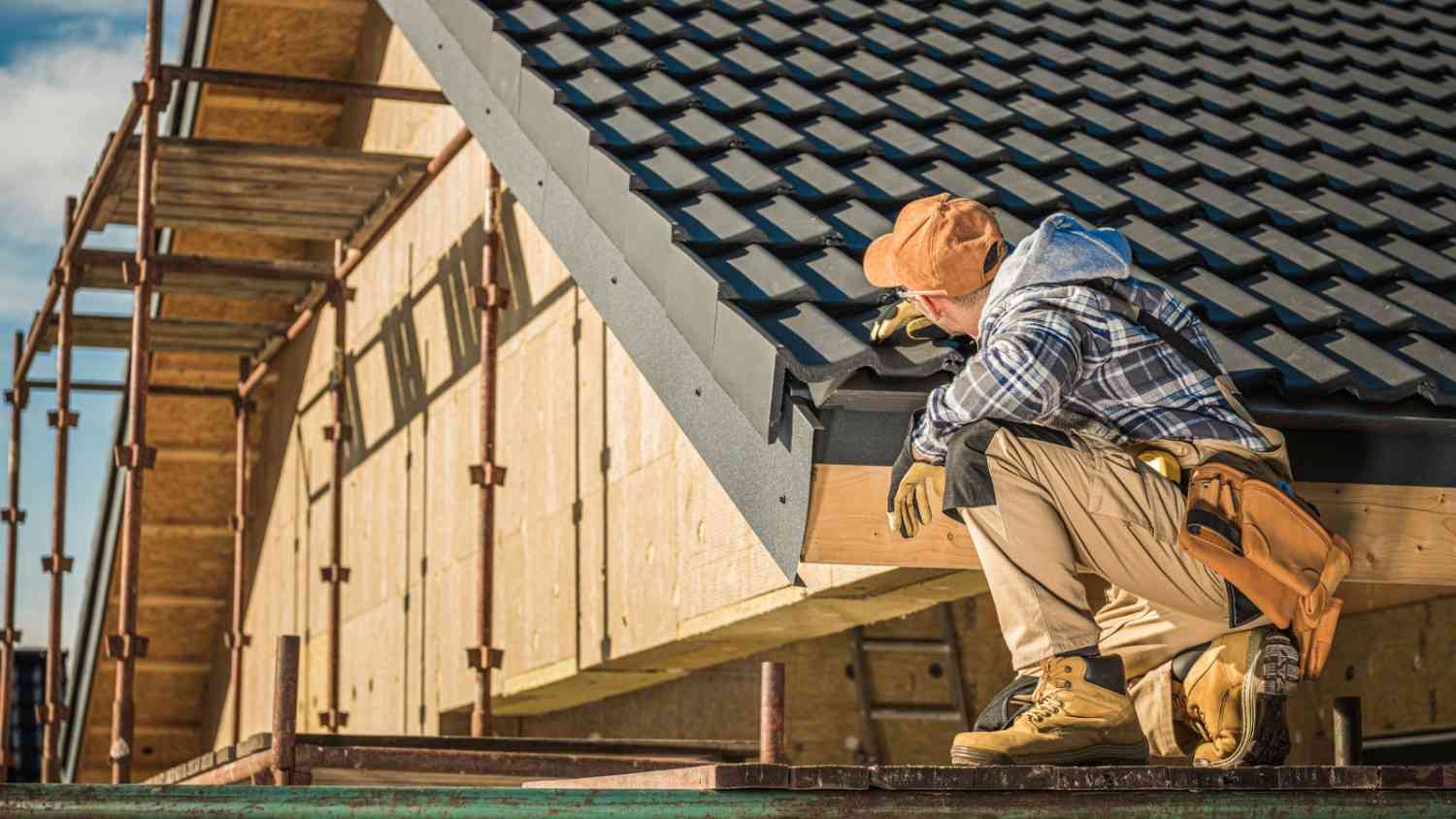Tustin’s climate presents unique challenges for homeowners when it comes to roof maintenance. The extreme summer heat can cause roofing materials to degrade, while the winter rains bring the risk of leaks and water damage.
With both seasonal extremes, roofs face consistent wear and tear throughout the year. And this problem can affect you in many different ways.
To help you face this situation with confidence, we’ll guide you on how to care for your roof during the intense summer heat and the winter rains common in Tustin.
We’ll teach you everything you need to know and help you understand how integrating comprehensive roofing services into your maintenance routine can ensure your roof remains strong and reliable through every season.
Let’s dive into what you can do to safeguard your roof against Tustin’s changing weather patterns.
How Seasonal Weather Patterns Affect Roofing Systems in Tustin
Tustin’s seasonal weather patterns can take a toll on your roof in several ways. The hot summers bring extreme temperatures, which can cause roofing materials to expand and contract. This constant movement can lead to cracks and other damage.
Asphalt shingles, for example, are particularly vulnerable to this stress, which causes them to break down faster, losing granules and deteriorating under the sun’s intense rays.
In contrast, the winter rains pose a different kind of risk. Water from rainfall can seep into cracks or weak points in the roof, leading to leaks. Flashing, which seals areas around vents, chimneys, and skylights, is especially susceptible to water damage.
Over time, persistent rain can cause this flashing to loosen or crack, leading to more extensive leaks and interior water damage.
These shifts in temperature and moisture create a cycle of wear and tear on your roof. During summer, the heat can dry out materials, causing brittleness. In the winter, rain accelerates the process of material breakdown by allowing moisture to sit longer on your roof.
If left unchecked, these seasonal impacts can lead to premature roof aging and the need for expensive repairs.
Why Seasonal Roofing Maintenance Is Essential for Tustin Homes
Seasonal roofing maintenance is crucial for homeowners in Tustin due to the area’s varying weather conditions. The summer heat and winter rain can wear down your roofing materials over time, making it necessary to perform regular maintenance.
By addressing minor issues before they become major problems, you can avoid costly repairs and extend the lifespan of your roof. Proper maintenance also ensures that your home stays protected from the elements, preventing water damage, leaks, and energy loss.
Key reasons why seasonal roofing maintenance is essential for Tustin homes include the following:
- Prevents premature aging: Regular maintenance ensures that your roof doesn’t break down under the harsh summer sun or constant winter rain.
- Reduces energy costs: A well-maintained roof with proper ventilation can help keep your home cooler in the summer and warmer in the winter.
- Increases home value: A roof that’s in good condition enhances your home’s curb appeal and overall value.
- Minimizes the risk of leaks: Regularly inspecting flashing, shingles, and gutters prevents water from entering your home during heavy rains.
- Saves money long-term: Routine care helps you catch issues early, avoiding the need for significant repairs or a full roof replacement.
Seasonal roofing care in Tustin addresses both the immediate and long-term needs of your roof. With consistent attention to your roof’s condition throughout the year, you protect your home from damage, ensure its longevity, and keep repair costs down.
By staying on top of maintenance, your roof will withstand Tustin’s challenging weather conditions without significant issues.
Essential Summer Heat Protection Strategies for Your Tustin Roof
The summer heat in Tustin can cause significant strain on your roof, accelerating wear and tear. Proper protection strategies can help minimize damage and extend the life of your roofing materials.
In the sections below, we’ll explore key steps to protect your roof from the intense summer temperatures, including inspections, ventilation, and coatings.
Conducting Pre-Summer Roof Inspections to Identify Vulnerable Areas
Before summer heat arrives, perform a thorough roof inspection to identify any areas that might be vulnerable to damage. Start by checking for cracked, curling, or missing shingles. These issues may worsen with the intense heat, causing further degradation to the roofing system. If you spot any damage, address it promptly by replacing the shingles or tiles to prevent larger problems from developing.
Next, focus on the flashing around chimneys, vents, and skylights. The high temperatures can cause flashing to loosen or crack, creating an entry point for water during future rains. It’s essential to seal any gaps to ensure your roof is ready for both the heat and potential rainstorms that follow.
Finally, clear off debris from valleys, ridges, and gutters. Accumulated debris can trap moisture and heat, accelerating the breakdown of roofing materials. By maintaining a clean roof surface, you ensure that airflow is maximized and prevent any added stress during the hottest months.
Improving Attic Ventilation to Reduce Heat Buildup and Damage
Proper attic ventilation is one of the most effective ways to manage heat buildup in your home. Without sufficient ventilation, the attic can heat up quickly, causing the temperature beneath your roof to rise significantly. This trapped heat can weaken roofing materials, leading to premature aging, cracks, and even mold growth.
To improve ventilation, ensure that your attic has a proper balance of intake and exhaust vents. Installing ridge vents and soffit vents is an effective way to allow hot air to escape and cooler air to enter. By enhancing airflow, you reduce the pressure heat puts on the roof materials and create a more stable internal environment.
Additionally, consider upgrading your insulation to regulate the temperature in your attic further. Proper insulation prevents heat from transferring into the attic, keeping the roofing system cooler overall. This simple step can significantly extend the lifespan of your roof and improve your home’s energy efficiency.
Applying Protective Coatings and Reflective Solutions for Temperature Control
One of the most effective ways to combat summer heat is by applying reflective coatings to your roof. These coatings are designed to reflect sunlight, keeping the roof cooler and reducing the stress that heat puts on your roofing materials. Reflective coatings are beneficial for flat or low-slope roofs, where the sun’s rays can become trapped and cause rapid deterioration.
In addition to reflective coatings, you can apply a protective sealant to enhance the durability of your roof. These coatings not only help regulate temperature but also protect the roofing surface from UV damage, which can cause materials to break down over time. For homeowners looking for a comprehensive guide to roof care in Tustin, reflective coatings and sealants offer an excellent solution for both heat management and roof preservation.
By investing in these solutions, you not only improve your roof’s resilience to heat but also save on cooling costs. A cooler roof means a more energy-efficient home, reducing the need for constant air conditioning during hot summer days.
Recognizing and Addressing Heat Stress Signs on Roofing Materials
Heat stress can take a visible toll on your roofing materials. One of the most common signs is the warping or curling of shingles, which happens when the intense heat causes the material to expand and contract. Cracked shingles are another red flag, as heat can make the material brittle, causing it to break under stress. If left untreated, these issues will only get worse over time, leading to leaks and the need for expensive repairs.
Pay close attention to the condition of your shingles, especially after long stretches of heat. If you notice any signs of heat damage, address them immediately. Replace damaged shingles, and check for any underlying issues such as loose flashing or compromised seals around vents.
In addition, inspect areas where water might collect, such as roof valleys. Heat can cause moisture to evaporate slowly, leading to stagnant water that can promote mold and algae growth. By recognizing these early signs of heat stress, you can take action to prevent further damage and protect the integrity of your roof.
Critical Winter Rain Preparation and Maintenance for Tustin Roofs
Winter rainstorms in Tustin bring the risk of leaks and water damage to your roof. Ensuring your roof is properly maintained before the rains begin will help protect your home from water-related issues.
The sections below cover essential preparations, including cleaning gutters, sealing flashing, and checking for leaks to safeguard your roof during the rainy season.
Performing Thorough Gutter Cleaning and Drainage System Checks
Your gutters play a vital role in managing rainwater, directing it away from your roof and foundation. Clogged gutters can lead to water accumulation on the roof, increasing the risk of leaks and water damage. To prevent this, clean your gutters thoroughly before the rainy season begins. Remove any leaves, dirt, and debris that could block the flow of water.
In addition to cleaning, ensure that the gutters are securely fastened and free from any cracks or gaps. Check the downspouts to make sure they are clear and directing water away from your home’s foundation. If necessary, install gutter guards to prevent future debris buildup, making it easier to manage rainwater during the winter months.
A clean and functional drainage system will help prevent pooling water on your roof and reduce the risk of leaks and water damage to your home. Regular maintenance of your gutters ensures that rainwater flows freely, protecting your roof from the effects of Tustin’s winter storms.
Inspecting and Sealing Flashing Around Chimneys and Vents
Flashing is an essential component of your roofing system, sealing areas around chimneys, vents, and skylights. Over time, the flashing can become loose or cracked, allowing water to seep in and potentially cause leaks. Before the rainy season, inspect all flashing around vulnerable areas and look for any signs of wear or damage.
If you notice any gaps, cracks, or deterioration in the flashing, reseal or replace it as soon as possible. Proper sealing prevents water from entering your home and ensures that the roof remains watertight during heavy rain. Pay special attention to the flashing around vents and chimneys, as these areas are particularly prone to damage.
Addressing flashing issues before the rainy season begins helps prevent water from seeping into the interior of your home. Sealing the flashing properly will keep your home dry and protect it from the elements throughout the winter.
Identifying and Repairing Leaks Before the Rainy Season Begins
Leaks are a significant concern during the winter months, especially when heavy rain is common. Even a small crack or hole in the roof can allow water to seep into your home, causing damage to the ceiling, insulation, and walls. Before the rainy season starts, thoroughly inspect your roof for signs of leaks.
Look for damaged or missing shingles, cracks in the roof, or areas of moisture around flashing. If you find any signs of leaks, repair them promptly to prevent further damage. If you’re unsure how to stop roof leaks, a professional roofing contractor can help identify problem areas and provide the necessary repairs.
Early leak detection and repairs are key to keeping your home dry and protected during the winter months. By addressing leaks before the rains start, you can avoid the headache of dealing with water damage inside your home.
Checking for Damaged or Missing Shingles and Tiles
Damaged or missing shingles and tiles are common culprits when it comes to roof leaks, particularly in the winter. These damaged materials allow water to seep into the roof deck, leading to leaks and potential water damage. To prepare for winter rain, inspect your roof for any broken, missing, or loose shingles or tiles.
Replacing damaged or missing shingles will help maintain the integrity of your roof and prevent water from entering. Don’t forget to check areas where shingles overlap, as these are vulnerable spots for potential leaks. A well-maintained roof with no gaps or damaged materials ensures that rainwater is diverted correctly and that your home remains safe from water damage.
Regular inspections and timely repairs will keep your roof in optimal condition, allowing it to withstand the wet winter season without issue. Addressing damaged shingles early helps you avoid costly repairs and the risk of interior water damage.
Protect Your Tustin Roof Through Proactive Seasonal Care
Taking proactive steps to care for your roof throughout the year will save you from costly repairs and ensure long-term durability. The combination of summer heat and winter rain in Tustin can quickly cause wear and tear on roofing systems if not properly maintained.
By staying ahead of potential issues with regular inspections, ventilation improvements, and timely repairs, you can avoid the stress and expense of major roof problems.
Hiring a trusted general contractor for routine maintenance and repairs can further ensure your roof remains strong and reliable. They have the expertise to spot potential issues early and can offer professional solutions tailored to your roof’s specific needs.
With the proper care, your roof will not only withstand the extreme weather conditions but will also provide long-lasting protection for your home. Never wait for issues to arise. Invest in proactive seasonal care today.

